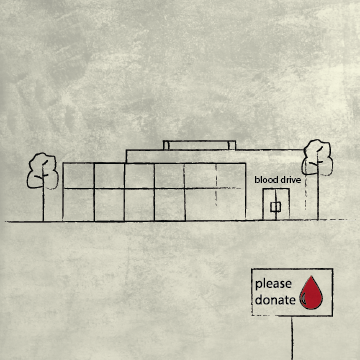Blood donations critical in times of crisis
Mar 31, 2020
At the beginning of March, The American Red Cross published a press release encouraging people to donate blood. Blood centers across the nation have been calling for more blood supply due to the outbreak of COVID-19.
Community Blood Services of Illinois, located in Urbana, required appointments for donating blood under the circumstances of COVID-19 since March 24. Walk-ins were not able to donate. This decision helped the blood center control and trace the donor flow. Community Blood Service of Illinois directly supplies to the Champaign County area, including two hospitals in Champaign-Urbana.
Kirby Winn, public relations manager at Community Blood Services of Illinois, explained how the blood centers are being impacted by the COVID-19 pandemic. According to Winn, the blood centers provide an essential service that is exempt from the shelter-in-place directives. The Daily Illini interviewed Winn about the necessity of blood donation centers in the time of a crisis.
This interview has been edited for length and clarity.
The Daily Illini: How does the COVID-19 pandemic affect the storage of blood?
Get The Daily Illini in your inbox!
Kirby Winn: Any of the blood drives that would have been held at schools are probably canceled. It has a major impact because so many schools are closed. And it is not just schools; businesses are changing their policies, telling people to work from home. It has been a really significant loss compared to what we would expect to collect from our mobile blood drives. I also have some good news, though. Since people are hearing the message of cancellations, we need donors to come to the blood drives and blood centers themselves. People need blood transfusions, no matter what is happening, because of their own diseases and not necessarily because they are infected by COVID-19. The donors’ response so far has balanced what we have lost in cancellation. Right now, I can say, the blood supply is in good condition, but we are very concerned about what will happen if things get worse.
DI: What is the normal inventory level at the Community Blood Services of Illinois?
KW: Every week, we collect about a little bit more than 3,000 donations, and we supply to the area of the Champaign County, also from Madison, Wisconsin, to St. Louis, Missouri.
DI: What precautions have the blood centers done to provide a safe environment? Or what has changed since the outbreak of COVID-19?
KW: We have standard protocol toward keeping the facility very clean, wiping down all surfaces and chairs between every donor. We are doing all that we can to enforce social distancing. We give extra space in the post-donation rest area. We want everyone who gives blood to call us first or to make an appointment online. Over the years, we’ve always accept walk-in donors. However, we are not allowing walk-ins right now; the appointment schedule allows us to know who has come in and what time as a precaution. We take the donors’ temperature, blood pressure and a drop of blood for testing prior to the donation. If you come to the blood center, you will see signs outside saying that if you have any symptoms of virus infection or have been in close contact with people who have symptoms, do not come in to donate.
DI: Are you worried about the future of storage if the pandemic gets worse?
KW: Yes, we are worried about it. We have a lot of information from our medical team, but we know that we have a lot of support, and it is very positive, wonderful. We don’t know what direction things are going to go, we don’t know the impact of a probable increase in infections unless we experience it. But for now, the blood supply has been in good shape.
DI: What if an infected person with so far no symptoms donates blood?
KW: One thing we know is that the blood doesn’t transfer the coronavirus. The virus only affects the lungs and doesn’t go into the blood. One thing we always do is that after donors donate blood, if they don’t feel well afterwards we ask them to call us. Then we can identify the unit of blood collected from that donor, either we test the sample or we dispose of it. We can also trace people who donors may have been in contact with. This hasn’t happened at our donation center, but we realize it is a possibility.






